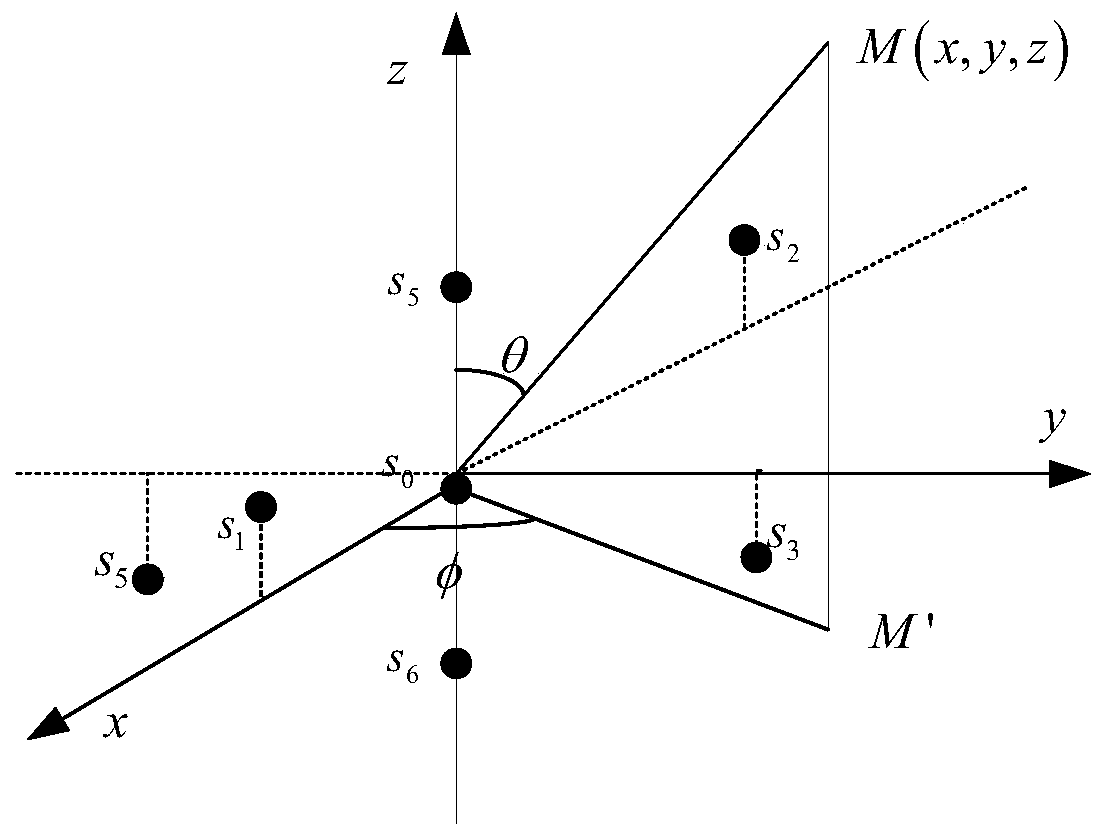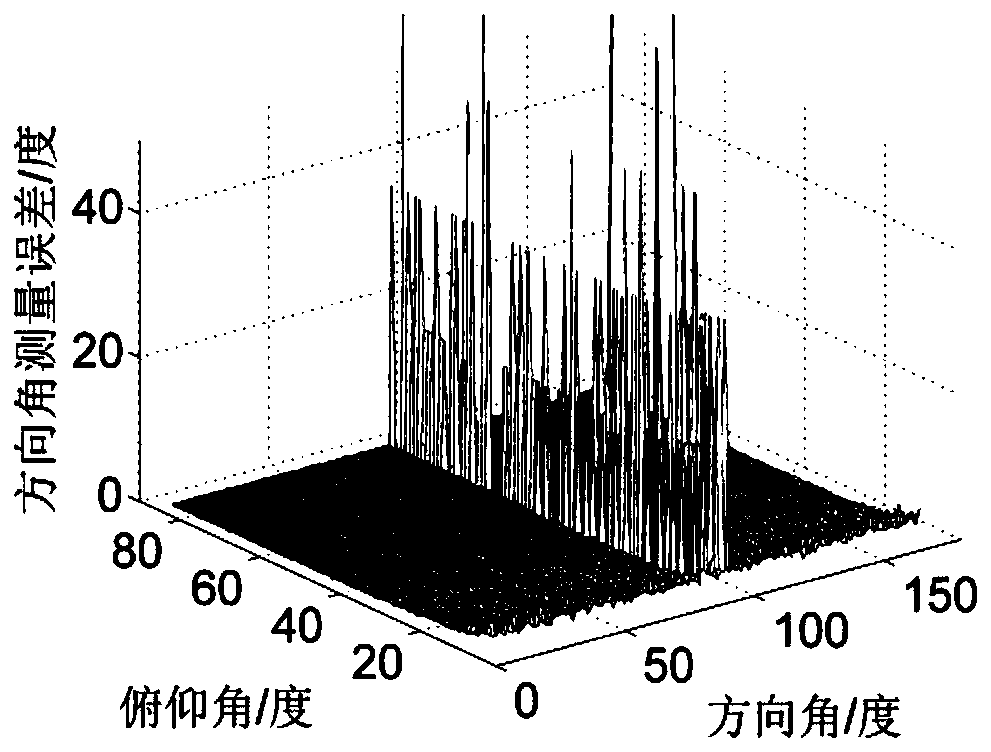Microphone array method for sound source localization
A technology for microphone array and sound source localization, applied in the field of microphone array for sound source localization, can solve the problems of complex localization algorithm, affecting the real-time performance of localization, high computational complexity, etc., and achieves improved distance localization accuracy, high engineering application value, The effect of improving the ranging performance
- Summary
- Abstract
- Description
- Claims
- Application Information
AI Technical Summary
Problems solved by technology
Method used
Image
Examples
Embodiment Construction
[0037] A microphone array method for sound source localization according to the present invention will be described in detail below with reference to the embodiments and the accompanying drawings.
[0038] A kind of microphone array method for sound source localization of the present invention comprises the following steps:
[0039] 1) Set the positions of the spatial distribution of the seven microphones in the seven-element stereo microphone array, such as figure 1 Shown:
[0040] the s 0 (0,0,0),s 1 (d,0,d),s 2 (-d,0,d),s 3 (0,d,-d),s 4 (0,-d,-d), s 5 (0,0,d),s 6 (0,0,-d)
[0041] Among them, s 0 is the microphone at the origin, s 1 ~s 6 are 6 microphones distributed at other positions than the origin, d is s 1 ~s 6 the distance from the coordinate axis;
[0042] 2) establish the mathematical model of microphone array according to the position of seven microphone spatial distributions:
[0043]
[0044] Among them, τ i is the sound source arriving at the ...
PUM
 Login to View More
Login to View More Abstract
Description
Claims
Application Information
 Login to View More
Login to View More - R&D
- Intellectual Property
- Life Sciences
- Materials
- Tech Scout
- Unparalleled Data Quality
- Higher Quality Content
- 60% Fewer Hallucinations
Browse by: Latest US Patents, China's latest patents, Technical Efficacy Thesaurus, Application Domain, Technology Topic, Popular Technical Reports.
© 2025 PatSnap. All rights reserved.Legal|Privacy policy|Modern Slavery Act Transparency Statement|Sitemap|About US| Contact US: help@patsnap.com



